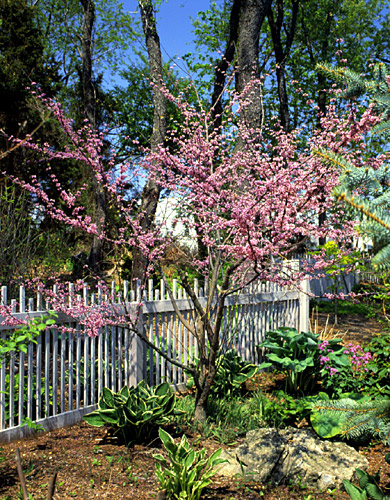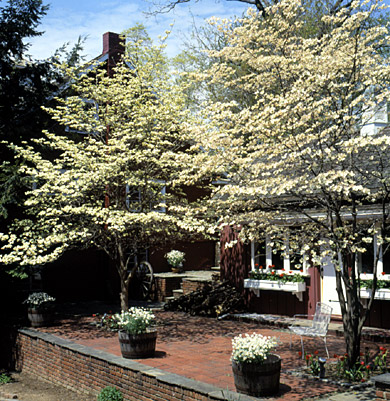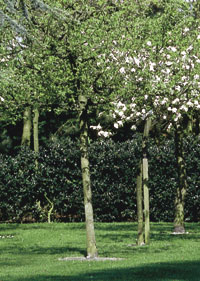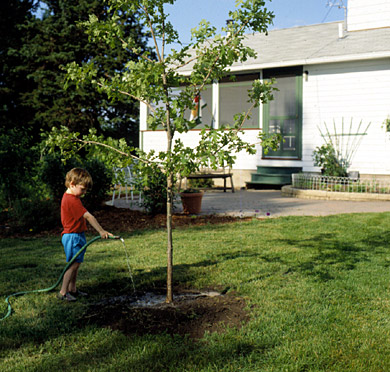






Whether or not to plant a tree is one of the first landscaping decisions you need to make, and one of the most lasting ones, as a tree will stay around to reward or punish you and generations to come. When the appropriate tree is selected and planted in a proper spot, it frames the home and beautifies the landscape, making both more enjoyable. Trees increase the resale value of property, and save energy costs. Plan now, savor later.
Learn more about shrubs that work for your yard, too.
continue reading belowAs you consider trees, visualize them at maturity and remember that some trees develop as much width as height if given space. Picture each tree's size and shape in relation to the overall landscape and the size and style of the house. Trees that peak at 40 feet work best beside or behind a one-story home. Taller trees blend with two-story houses and large lots. Smaller trees (under 30 feet at maturity) suit streetside locations, small lots, and intimate areas such as patios.
Choose trees from two general categories that will suit your needs:
Be sure to include a variety of trees in your landscape to avoid losing much if diseases or pests strike. Buy disease- and pest-resistant cultivars.
Every year, a parade of new hybrids and cultivars reaches the market. Typically, local nurseries stock the most popular trees in the vicinity, while mail-order sources offer more variety. Trees are sold in three forms:
 Flowering dogwoods make a greatinvestment, as they providecool shade in the summer.
Flowering dogwoods make a greatinvestment, as they providecool shade in the summer.
 With proper site selection, a treeshould have plenty of room toreach maturity.
With proper site selection, a treeshould have plenty of room toreach maturity.
It's fun to pick out a tree you like, but it's tricky to pick out a proper place to put it. Careful planning and positioning of any new addition to your landscape will ensure its success and avoid problems in years to come. As an essential landscape feature, use trees to delineate areas, form a focal point, or reinforce vistas.
An appropriately sited tree has plenty of room to reach maturity and won't interfere with overhead utility lines, underground pipes and utility lines, street traffic, lighting, or parking. Avoid planting under utility lines. If you must, choose low-growing varieties that will reach no closer than 10 feet from lines when mature.
Place strong-wooded shade trees at least 50 feet apart and 15 feet away from buildings and utility lines. Add another 10 to 20 feet for soft-wooded trees to move in stormy weather without breaking up. Space small trees at least 10 feet away from buildings and each other.
Locating trees on the east and west sides of a building provides maximum shade. Plan to shade driveways, parking areas, air-conditioning units, and dark-color surfaces such as roofs.
Group trees to increase shade and reduce lawn area. A group of three or more trees including the same species or mixed company can create a special effect. Plant two or more rows of evergreens when creating a windbreak. Be careful not to block the path of winter sun when building visual or noise screens.
 Be sure to give a newly planted treeplenty of TLC.
Be sure to give a newly planted treeplenty of TLC.
Try not to prune a newly planted tree unless the form needs improving. Prune flowering trees in spring, after blooming, to correct form problems. Crab apple trees, an exception, should be pruned in late winter. Remove diseased or dead branches anytime.
Copyright © www.100flowers.win Botanic Garden All Rights Reserved